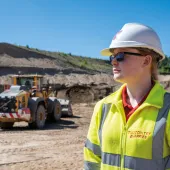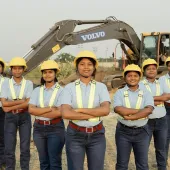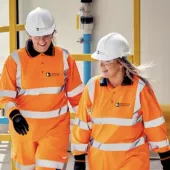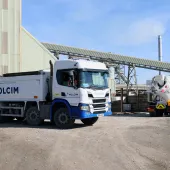Getting below the surface of gender equality
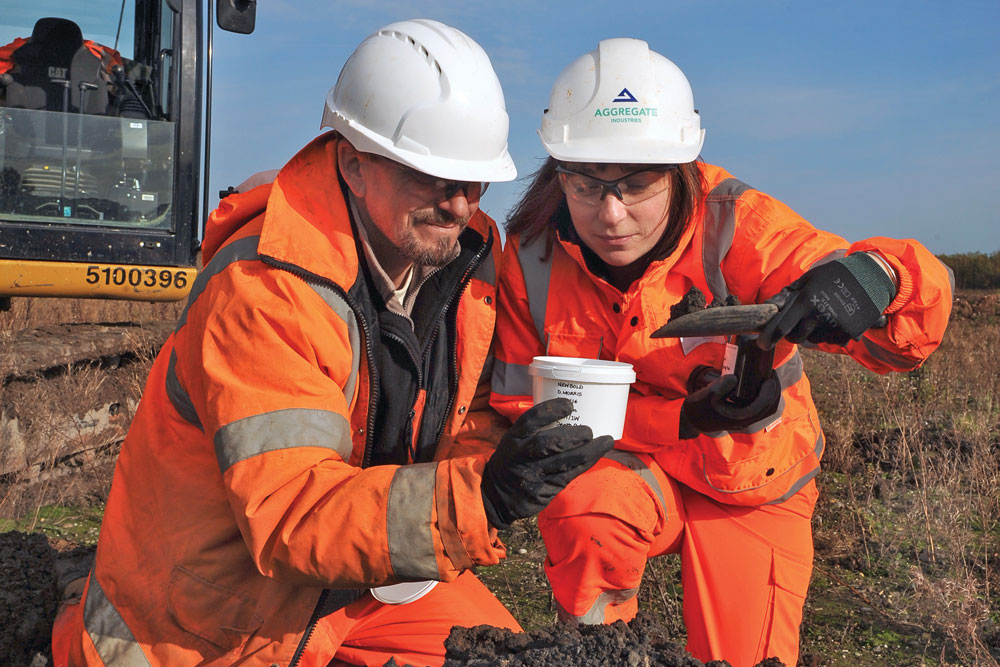
First published in the May 2018 issue of Quarry Management
As the UK commemorates 100 years of the female vote, the reality is that gender disparity is a still a major issue in the UK – particularly in the quarrying sector where stereotypes and sexism can, and do, still exist. Yet, at the same time, amid an escalating skills gap, it has never been more important to attract the new talent pool offered by the other 50% of the population. Jo Hankinson, HR business partner at Aggregate Industries, advises on why it is time to get women into the sector and how an increase in female workers could help bridge the current skills deficit.
There is no doubt that the need for greater respect and opportunities for women is becoming an ever-more prominent feature of the public conversation. In what has largely been coined by the media as the ‘Year of the Woman’, 6 February 2018 marked 100 years since women were first given the vote. On a global front, there has also been the ongoing #TimesUp campaign against gender bias, whilst events such as International Women’s Day strive to promote positive progress towards true equality for all.
Clearly, despite the progress that has been made, there is still a massive job to be done in ensuring women are given the same rights and opportunities as men. Aligned to this, a huge concern is the issue of male dominance in the majority of trade disciplines, largely due to outdated attitudes and companies not always doing enough to attract women, and one sector where this is still profound is the mining industry.
According to the most recent ‘Mining for Talent’ study conducted by Women in Mining (WiM) UK and PwC1, women occupy a mere 8% of all board seats in the world’s top 100 mining companies, with only four female executive directors in this group. Overall, this places the mining sector as the worst industry group in the world in terms of the ratio of women at board level. The report also estimates that just 5–10% of the mining workforce is female, depending on country and company.
Why is this still the case? A common belief is that the lack of available women to staff these sorts of positions starts in the classroom, with girls traditionally discouraged from entering what are perceived to be more ‘manly’ physical occupations and, therefore, less inclined to enrol in science, engineering, technology and maths (STEM) subjects. Whilst this is slowly changing, with more girls taking STEM A-levels than ever before last year2, it has limited the amount of female talent available to the industry thus far.
Also, there is still a widespread misconception that mining is limited to just quarry work when it actually offers a multitude of exciting career options and possibilities. From engineers who are vital to the efficient running and safety of mining operations, consultants who oversee mine design, planning and remediation, and geologists who investigate the rock materials and extractions, through to more office-based marketing, financial, HR roles and more – the options are wide ranging. Moreover, many of the larger companies, such as LafargeHolcim, the group Aggregate Industries operate within, can offer global mobility.
Finally, and perhaps an even bigger problem, is the ‘Big Boys Club’ culture that still thrives in pockets of the industry, often acting as a deterrent for women. This is demonstrated by the fact that the number of women entering the sector has dwindled consistently, resulting in the sparse female working population it has today. Yet the need for a female talent injection has never been greater. The mining sector continues to face a severe skills shortage, not just in the UK, but also globally, meaning that the female half of the working population could prove to be a much-needed untapped resource.
Moreover, research shows that having a more diverse and inclusive workforce can help achieve a higher return on equity and better financial performance. This is because it can strengthen an organization’s intellectual capacity, breeding the ability to innovate and adapt in today’s fast-changing environment. Indeed, the ‘Mining for Talent’ study mentioned above showed that having a critical mass of women in senior positions can have the maximum positive impact on a mining company’s performance.
Clearly, breaking down gender barriers is vital to safeguarding the future of the industry – and all companies have a part to play in encouraging women into their workforces. Aggregate Industries, for example, will be investing heavily in their diversity and inclusion programme over the next few years in order to ensure they have a more balanced workforce – with a particular focus on attracting more women.
Currently, as is typical with most traditionally male-dominated trade sectors, the company’s workforce population is made up of 84% males and 16% females. However, as part of a wider diversity and inclusion strategy, Aggregate Industries are committed to achieving a 20% gender balance by 2020 and a 30% gender balance by 2030.
As part of this, the company has continued to actively try to increase female intake for its graduate and higher apprenticeship schemes over recent years. As a result, a quarter (25%) of all graduates taken on in 2015 and 2016 were female, and a third (33%) of higher apprentices employed were female – covering the full spectrum of corporate and operational roles.
To help with the challenges some women may face working in a male-orientated environment, Aggregate Industries recently set up a female mentor programme specifically for female graduates. The company will also be running a series of short videos to celebrate the 100th anniversary of women’s right to work, as well as a campaign around International Women’s Day, as part of a wider communications push on the importance of equality to the business.
For Aggregate Industries, it is, ultimately, not just about attracting women, but breeding a culture that welcomes people of all genders, ethnicities, backgrounds, religions and circumstances, in order create a truly diverse and inclusive workplace for all – and that should not just be confined to mining or the construction industry, but should apply to the working world as whole.
Clearly, the underrepresentation of women in the modern mining world is repressive, outdated and unsustainable, and the industry must come together to stamp out stigmas and be more inclusive to females. Looking to the future, surely it is time to dig deep for gender equality.
References
- www.miningglobal.com/operations/study-mining-companies-need-more-women-board-room
- www.wisecampaign.org.uk/news/2017/08/more-girls-than-ever-taking-stem-a-levels-despite-drop-in-overall-entries
- Subscribe to Quarry Management, the monthly journal for the mineral products industry, to read articles before they appear on Agg-Net.com


